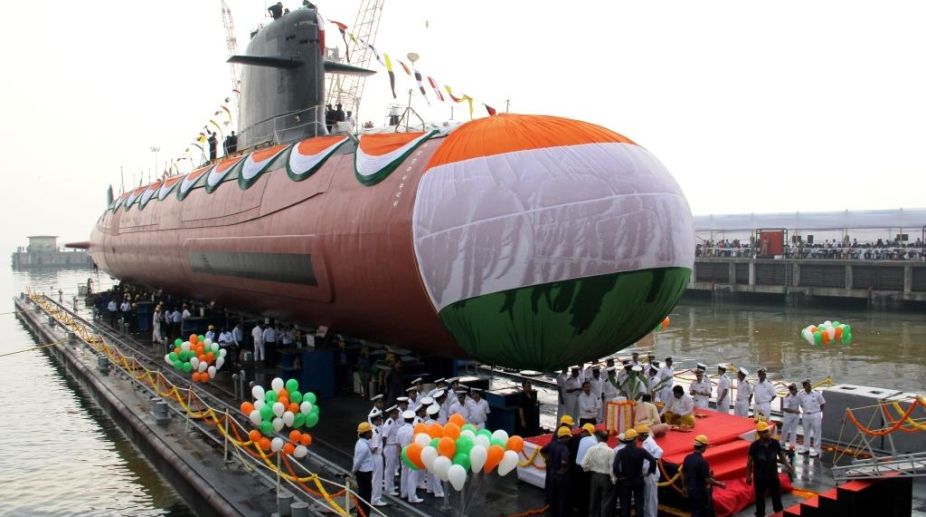That it was after a gap of 17 years the Indian Navy acquired a new conventional submarine must arouse mixed feelings. Sure there was justifiable pride and pomp in evidence when the Prime Minister commissioned the “boat” in Mumbai last Thursday, but that did not totally eradicate the dismay that the submarine arm has now been depleted to just 13 units, of which only seven or eight are serviceable at any point in time. The new boat, INS Kalvari, is seven years behind schedule, and any further slippage in the programme to build a total of six vessels of the Scorpene Class ~ of French design and produced with collaboration with that country at Mazagon Dock ~ would have unfavourable implications. It is all very well to come up with catchy acronyms but reality cannot be ignored: the success in domestic construction of surface-combatants has yet to be matched in building the sub-surface element of the fleet.
Hence every effort has to be made to have all six vessels in service within a five-year time-frame. No doubt the initial boat took longer because the shipbuilders had to regain the skills lost when allegations of kickbacks in the late-1980s scuttled the project to build smaller subs in partnership with HDW of Germany. It is easy for politicians to demand cancellation of contracts, yet the setbacks are for the forces to bear. The Scorpene project, fortunately, did not run into very rough seas but it had its share of troubles too. The expertise gained in constructing the very potent vessels will pay off should another domestic project be undertaken to build more units ~ either diesel-electric or nuclear propelled.
Advertisement
What must have disappointed naval personnel at Mazagon Dock on Thursday was that the commissioning of the new sub did not yield the “sting in the tail” for which they had hoped ~ a firm announcement on the next series of six boats for which firms from France, Russia, Sweden and Germany have responded to the initial RFI (request for information). Defence projects are time-consuming (as the Rafale deal confirms, all 36 jets are being bought in fly-away condition), particularly when there is a transfer of technology involved. Though private shipyards have registered significant progress, involving them in submarine-building might equate with asking them to run before they can walk.
Thus for the immediate future the public sector Mazagon Dock appears the best bet (it had built a pair of HDWs before taking up the Scorpene project) but the production line cannot be allowed to lie idle for long lest there is dissipation of the special skills needed for submarines ~ pressure-hull technology, for example. That “sin” was committed in the past, any repetition would be criminal: or to use contemporary jargon would be “anti-national”.









